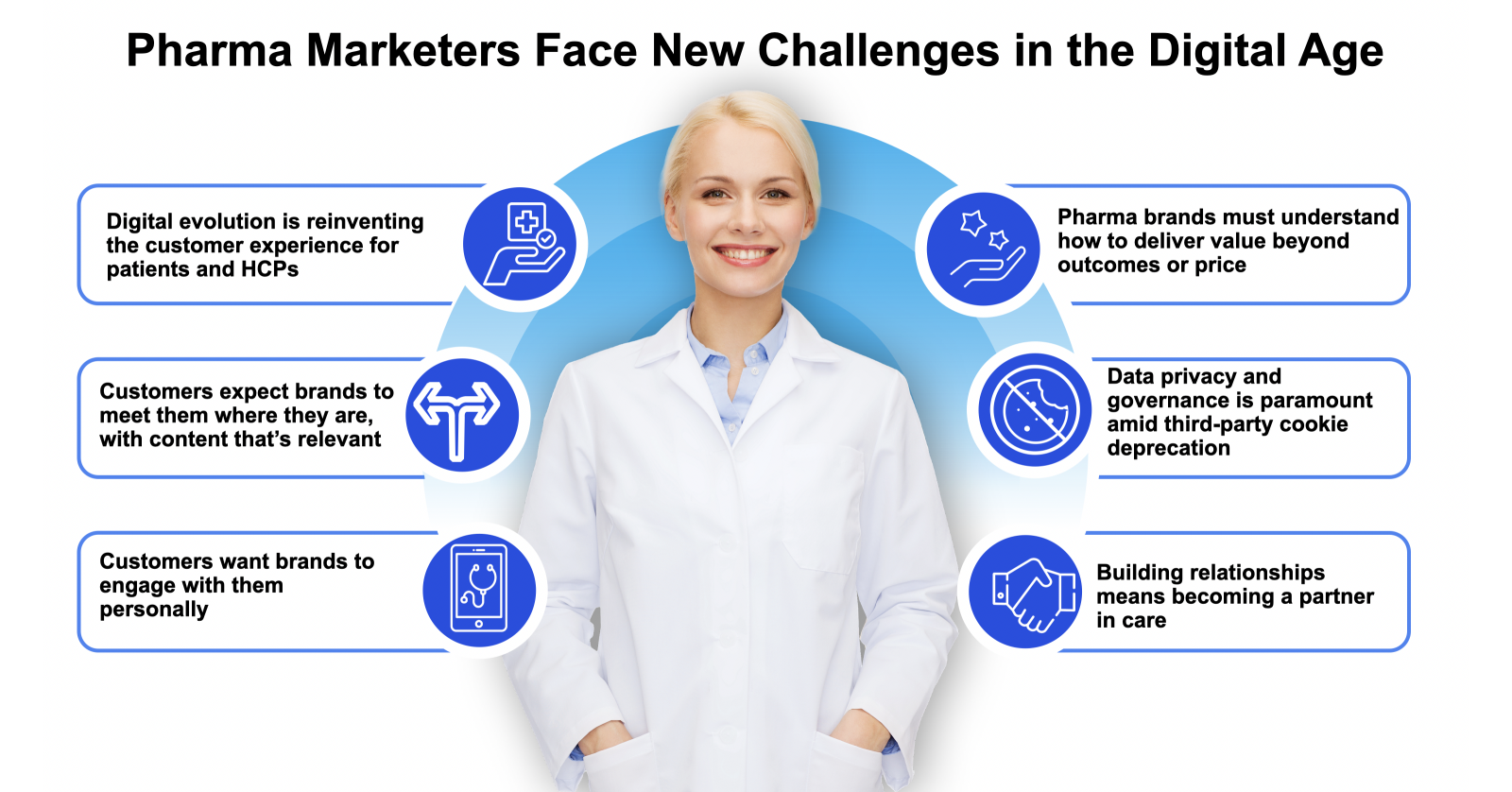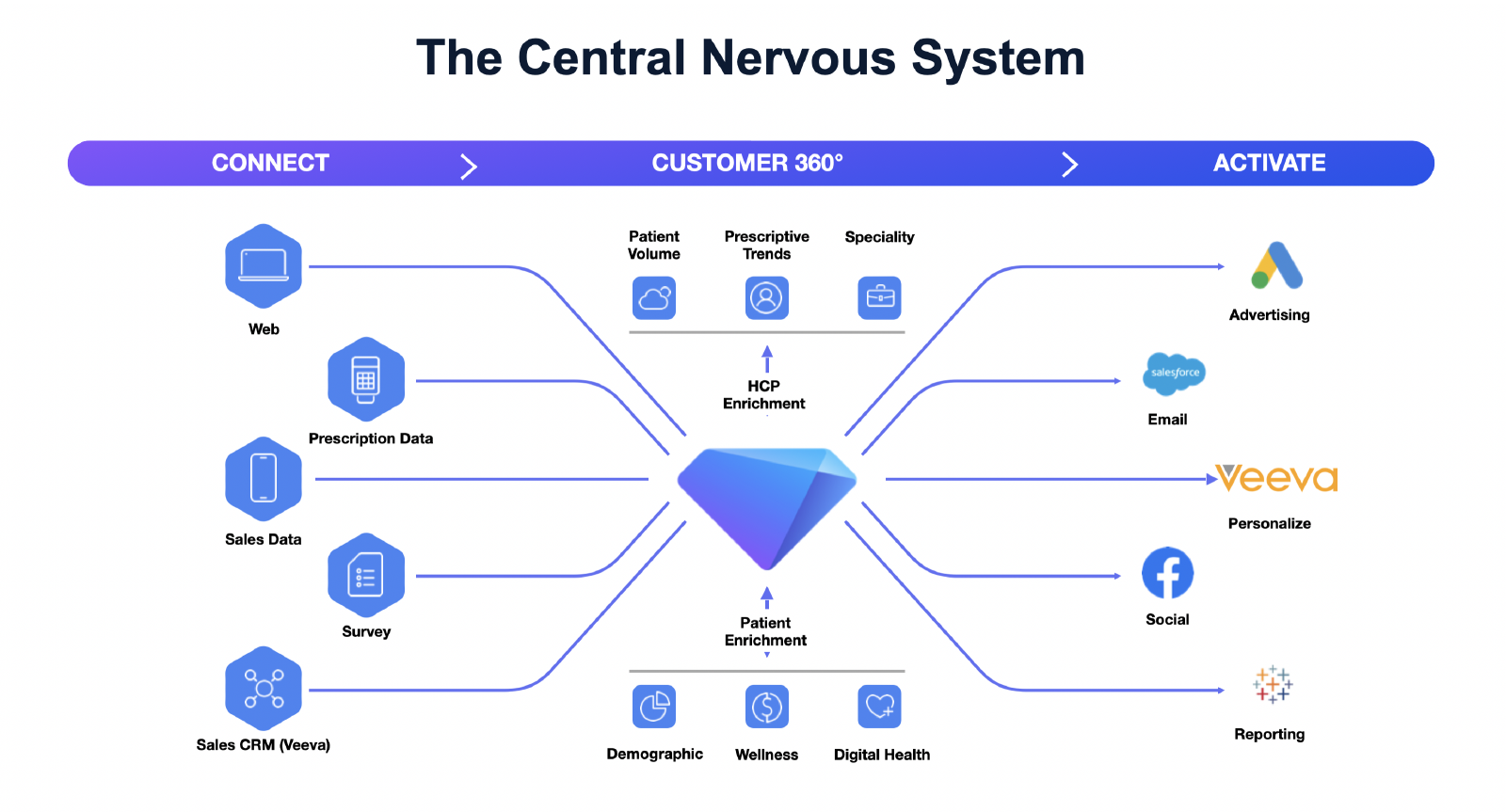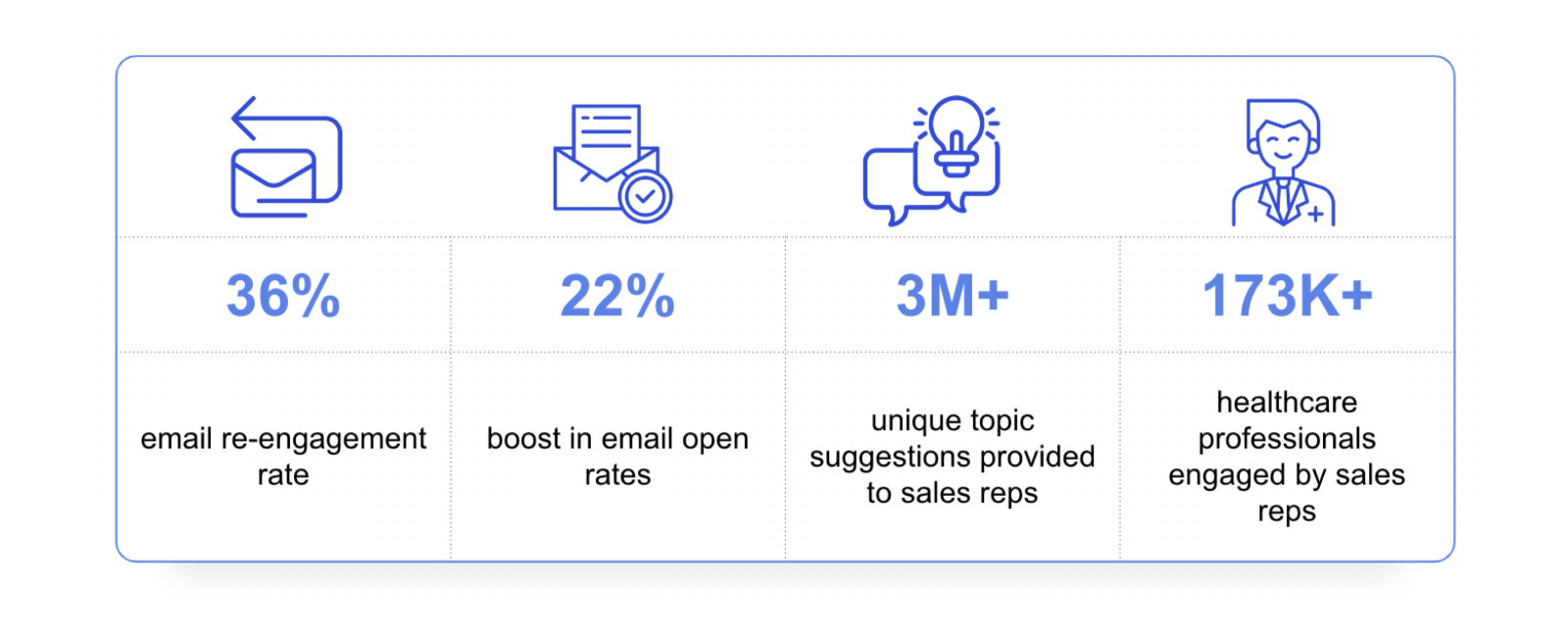Unlock the Power of Patient and Provider Data With a CDP
Last updated April 6, 2023
Data is at the center of every pharmaceutical and life science company strategy. Yet, according to Treasure Data research, less than one-third of healthcare providers (HCPs) believe the marketing they receive from pharma brands is personalized to them.Delivering relevant content and experiences on the right channels, at the right time, and with the right consent, is key to connecting with healthcare providers effectively. But what happens when the connection between a healthcare provider and a pharmaceutical company is disrupted?Let’s consider a hypothetical customer journey:Dr. Peters prefers to research new treatments online when he has free time during his hectic work schedule. One day, he downloads a white paper on a new treatment he’s interested in learning more about. The sales team gets a notification that Dr. Peters downloaded the white paper, and a sales rep calls the office to follow up.Pretty standard, right? However…The sales rep happens to call when Dr. Peters is really busy—he typically likes to follow up with sales reps via email, or schedule a virtual call when he has time. The unexpected call goes unanswered, and Dr. Peters’ perception of the brand is severely diminished. If the sales rep had a better understanding of how Dr. Peters preferred to engage, this scenario could have been avoided.
Patients Want Personalized Care, Too
Pharma marketers are facing new challenges in the digital age (see Figure 1). Effective marketing gets even harder as we think about the consumerization of healthcare and the shift in focus to the individual consumer. There are so many different digital devices at play, along with privacy concerns around how companies use personal data that’s shared.Add in the fact that medical clients are no longer just patients, but consumers for businesses providing medical services. Consumers are empowered with choice and price transparency, which means they decide how they will spend their dollars. They’re also used to seamless customer experiences from other brands they interact with throughout their day-to-day life. They want to be ‘seen’ and spoken to individually. When it comes to healthcare, they want the same experiences too.
Figure 1. Pharma marketers face new challenges in the digital age.For example, say a patient is newly enrolled in therapy, but after a few weeks becomes concerned about some of the side effects they are experiencing. The patient calls the contact center and is connected to a Care Coordinator. Without a unified customer profile, the Care Coordinator doesn’t have the patient’s most current information, and lacks context around their care journey.Having to verbally supply all of this information leaves the patient feeling frustrated, as the engagement did not feel tailored to their needs. Without the support they were looking for, the patient’s adherence to the treatment plan suffers.
Unlocking the Power of Customer Data
Pharma brands that successfully create personalized HCP and patient experiences see an immediate impact on the quality of the relationships they build with both patients and providers.But, how do you do that? To start, you need to create a central nervous system for your customer data management. (See Figure 2)Treasure Data’s HIPAA-ready customer data platform (CDP) takes insights from across the organization (like website data, prescription data, and sales data, for example) and aggregates it to create a unified customer profile. These profiles are then enriched with other data sources, like prescription trends, patient volumes, or demographics to create a holistic view of the customer. These profiles can then be activated back out to your CRM, email, social media, customer service, operations, or other platforms your teams are already using to provide richer insights and elevate marketing campaigns. Figure 2. The “central nervous system” for customer data management.
Figure 2. The “central nervous system” for customer data management.
Improving Patient and Healthcare Provider Experiences
So, you’ve seen how to connect your data. How does that translate to patient or provider experience?On the patient engagement side, a CDP can be used to segment profiles into highly specific audiences. These audiences can then receive personalized education or support materials that are highly relevant to their needs. Pharma brands can also identify patients who may be at risk for low adherence, and develop messaging to help keep patients on track with treatment.On the healthcare provider side, segmentation can be used to efficiently target HCPs with personalized omnichannel marketing. With a deeper understanding of an HCP’s engagement preferences, marketers can effectively activate or suppress messaging depending on how and where a provider wants to engage. Greater data visibility across marketing and sales teams also ensures efforts are coordinated, so HCPs are only contacted with the information and follow-ups that matter most.
Treasure Data in Action
Let’s take a look at how one global life sciences leader used Treasure Data to optimize incremental revenue and drive ROI.At first, the company was working with legacy systems that were costly, inflexible, and had capacity limitations. They lacked standardized capabilities around data-enabled marketing automation and activation, as well as enterprise-level data security and compliance.The company needed a customer data platform that could provide data unification and ID resolution to stitch their disparate data sources together. Treasure Data enabled the company to create a unified database of all healthcare professionals’ data with the appropriate security in place.With Treasure Data, the company was able to launch a campaign that yielded incredible results. With one campaign, the company was able to:
- Orchestrate a scalable model to push out 3 million topic recommendations to sales reps, improving personalization efforts for more than 170,000 healthcare providers.
- Boost marketing ROI and email engagement rates through improved cost efficiency of digital channels
- Maintain accurate privacy preferences and secure PII data.
 Figure 3. Key results for a life sciences company.
Figure 3. Key results for a life sciences company.
How to Get Started
The path to personalization can be challenging for pharma brands. But with the right strategy, companies can begin to build lasting relationships with both providers and patients. As you get started, here are five steps to keep in mind:
- Connect data across sources and systems to create a single customer view that’s shared across silos, systems, and teams.
- Create a deep understanding of the customer through profile enrichment and segmentation.
- Protect the customer and the brands through HIPAA-compliant tools, and a strong data governance strategy.
- Make access and autonomy easy for systems and teams so they can activate insights effectively.
- Take an agile approach to quickly act on insights, and meet customers where they are.
Want to learn more about how pharma and life sciences companies can use data effectively? We’ve put together a comprehensive CDP use case guide that breaks down how brands can securely unlock the value of their data, drive business value, and build a CDP roadmap that sets you up for success. Click here to get your copy of the guide now.
